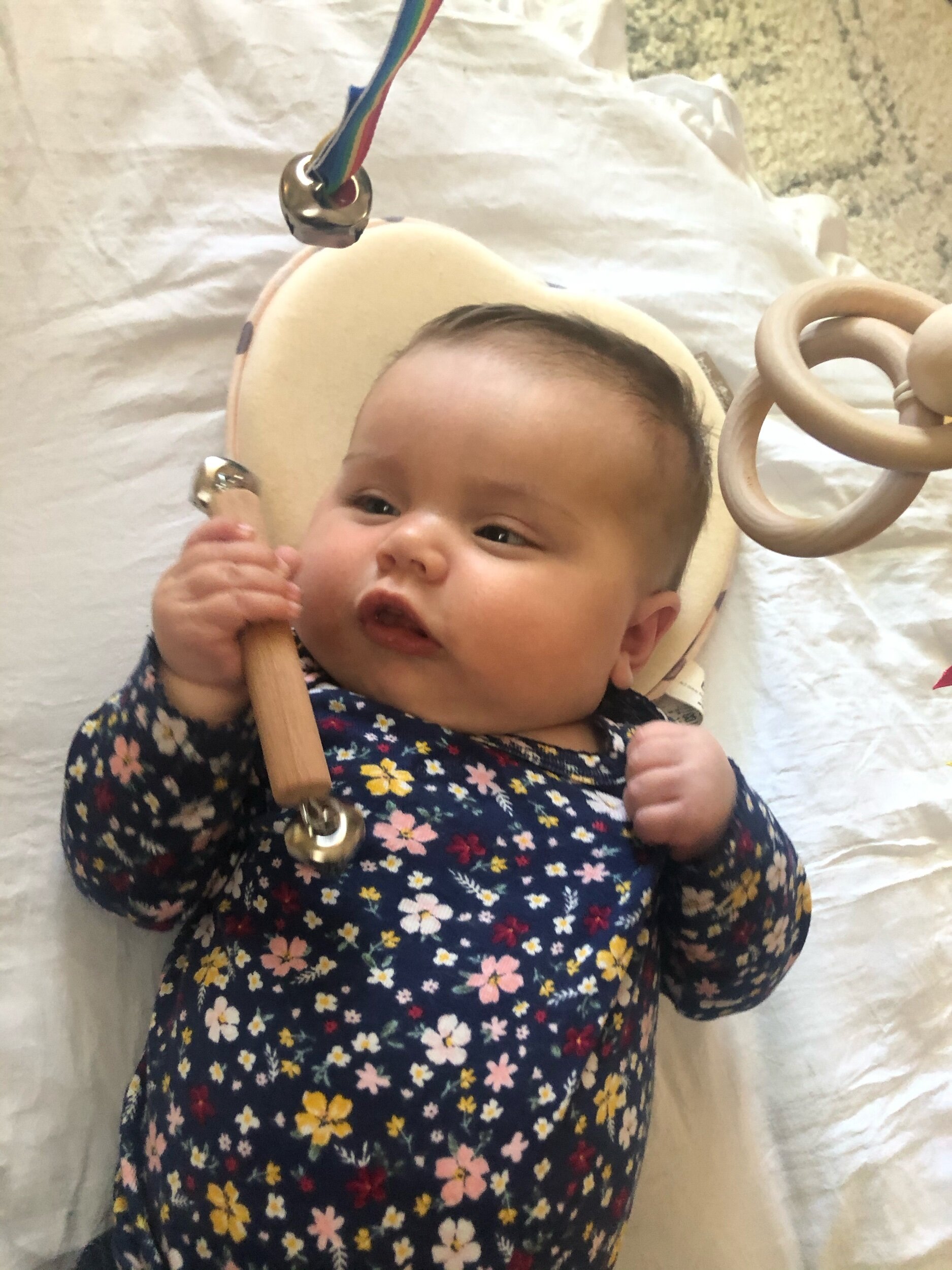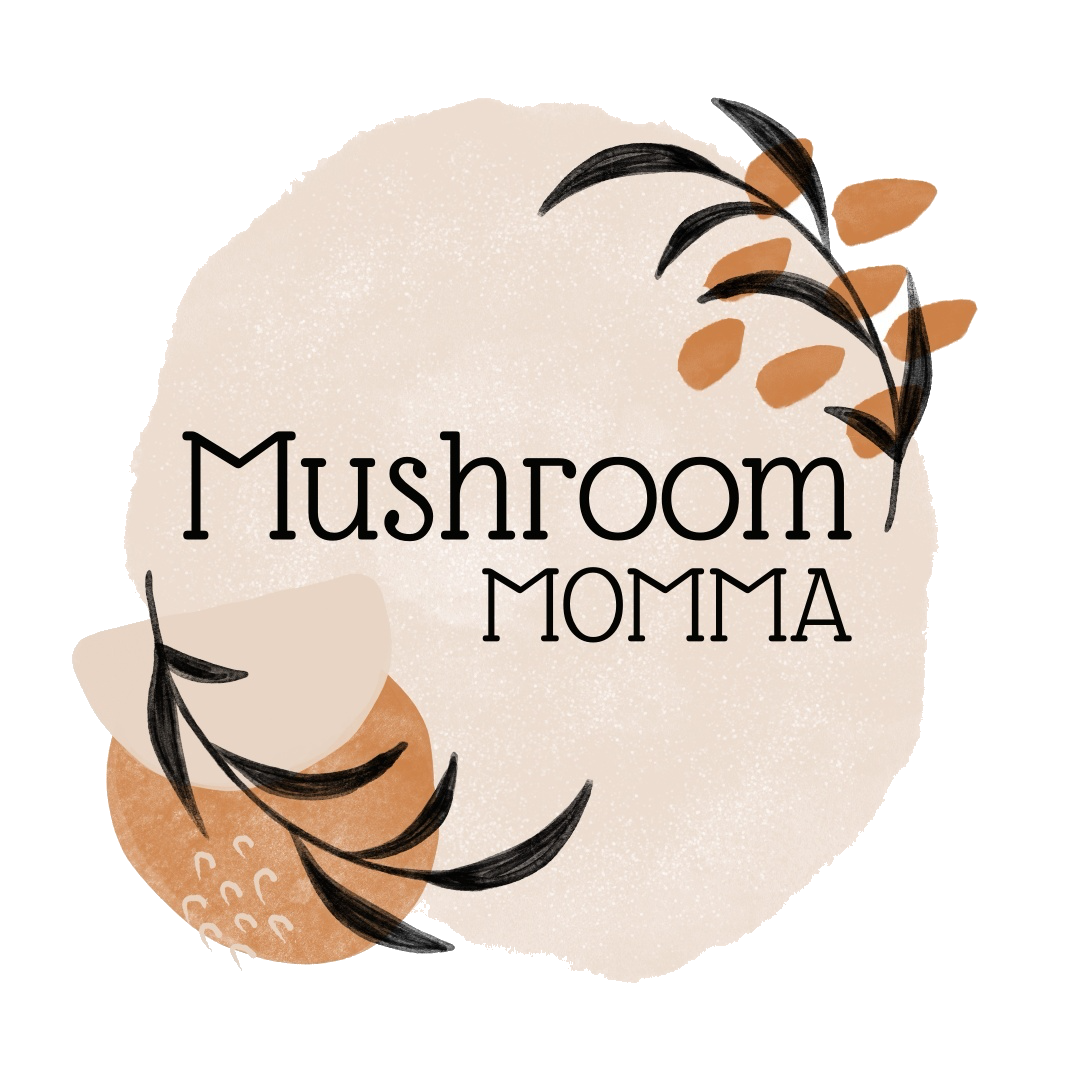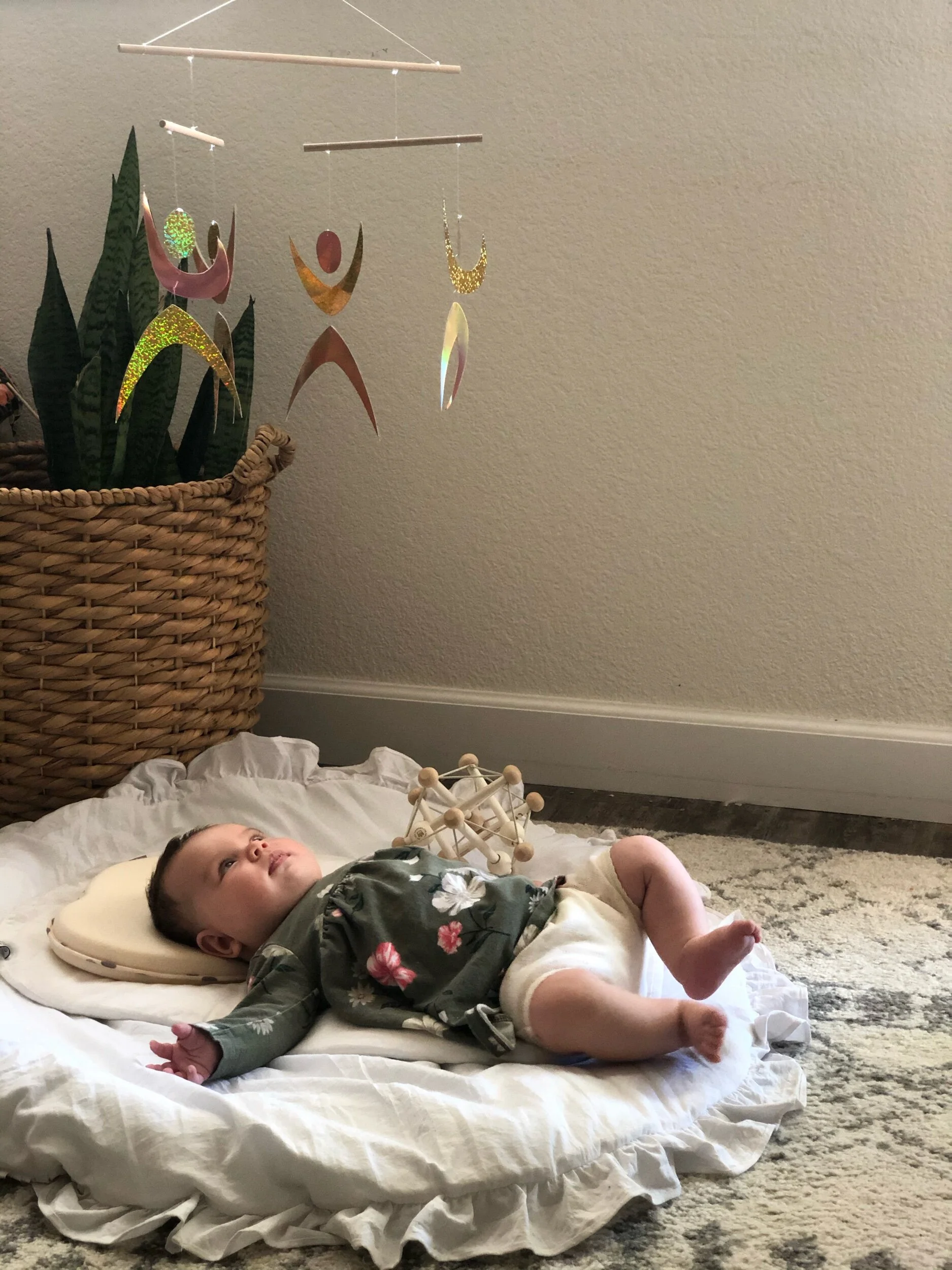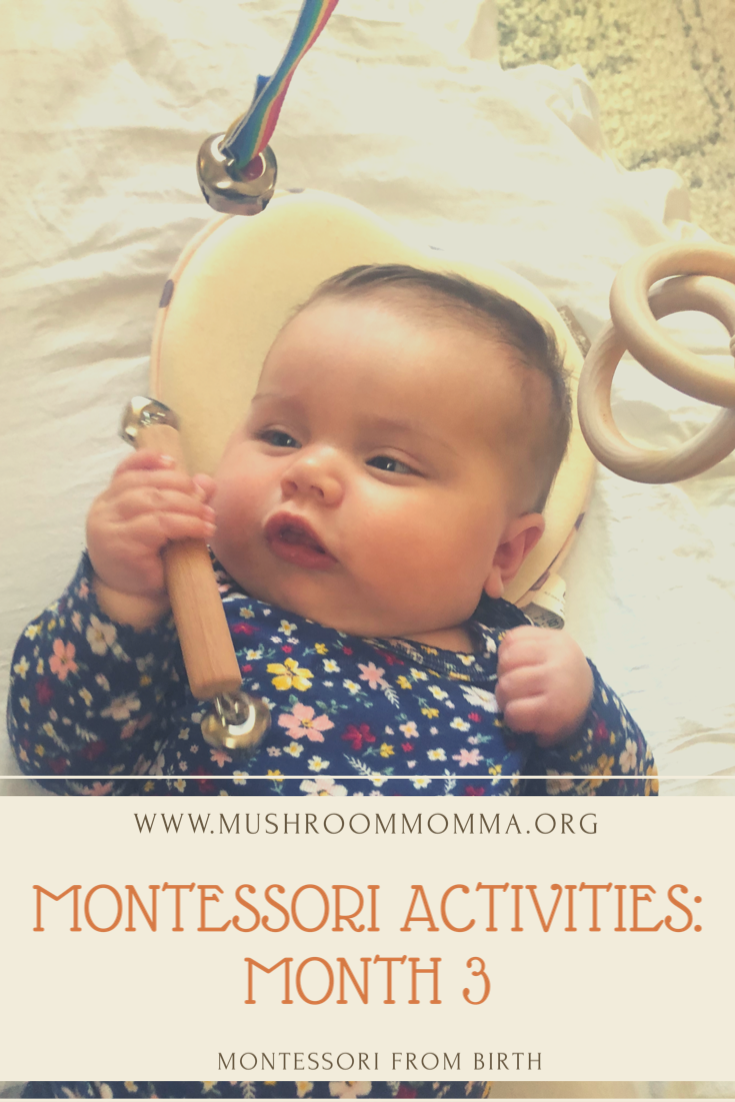Montessori From Birth: Month 3

This post may contain some affiliate links. For more information, visit my disclosure page.
“It follows that at the beginning of his life the individual can accomplish wonders – without effort and quite unconsciously.”
Dancers Mobile
Another month has flown by! This was our first full month sheltered in place. It’s been strange times, and focusing on Dahlia’s rapid development has surely been a distraction from everything else going on. This month her visual development seems to be skyrocketing. She is craving a lot of visual stimulation, and new things to look at. The end of the second month, Dahlia went through the second developmental “leap”. The second leap is the leap of patterns, and being able to recognize simple patterns in the world around her. This has become apparent this month, as she focuses deeply on patterns on the wall and on her materials. During this time is when baby’s often discover their hands and may practice controlling them. Dahlia spent a lot of time this month figuring out how to make a bell jingle tied to a ribbon, and has learned to mouth her own hands for self-soothing.
Month 3 brought many new and exciting changes in Dahlia’s development, and the materials brought out during this time allows her to practice these new skills she is acquiring, and master them.
Activities
Gobbi Mobile 7-10 weeks
Gobbi Mobile
The Gobbi Mobile is made up of five spheres covered in thread, in a color gradation. This mobile highlights the different color shades of a single color. This can be shades of blue, yellow, green, red, or whatever you choose! I chose to make mine in shades of a rust color. The Gobbi Mobile aides in visual development and visual discrimination, and is arranged from lightest to darkest in increasing lengths on the string. I made my gobbi mobile, you can buy this one.
Dancers Mobile 8-13 weeks
The Dancers Mobile is made with reflective paper and made to look as though they realistically move, or dance in the wind as it shines and reflects the light. This mobile has provided the most interest observed in Dahlia! The Dancers Mobile provides visual development, and more concentration and visual tracking skills as it moves slowly. You can make them, or buy them here.
Bell on a Ribbon 3-4 months
A ribbon is looped and sewn onto a bell and secured with elastic, allowing the baby to bat and pull on the bell. It is hung at chest height to baby. The sound of the bell motivates the child to want to repeat the batting, which offers stimulation for reaching, grasping, and batting. It also gives the child a point of reference to know where the bell is, and provides both auditory and visual experience. I used these bells and this ribbon to make mine.
Bell on a ribbon
Rattles and grasping:
Wood rattle 2+ months
A 4” wooden dowel with wood rings and spheres on the end provide a soft auditory experience. The baby can also mouth and grasp the rattle. I like to rub coconut oil on it to protect the wood, and also make it safe for baby to mouth. You can easily make your own, or this one is very similar to the one I made.
Rattle with bells 2+ months
A simple 4” wooden dowel with bells on each end provide auditiory and tactile experience. The baby can hold and shake it and experience the sounds it makes. You can make your own, or purchase one like this.
Other rattles 2-3 months
Bamboo cylinder, clacker, cube with bell, silver rattle - these all provide different auditory and tactile experiences.
Sqwish 2+ months
The unique shape of this rattle intrigues infants and is easy to grasp and hold. It encourages reaching, grasping, and two-handed play. It also helps with gross motor development and spatial recognition. At first, the baby can easily grasp it at any angle. As the baby gets older, they can begin to shake it and watch the beads move inside. They can also squish and pull it, and watch it come back to its original state. Get your own here.
Grasping Beads 3-4 months
Grasping beads are made up of five wooden beads threaded and knotted into a leather strap. The baby can hold them and manipulate and mouth them. The baby ca also transfer the beads from one hand to another, and also explore it by waving it around and banging it on a surface. This provides a visual, tactile, and auditory experience. I made mine using these beads, or you can purchase a similar one here.
Grasping Beads
Sqwish, grasping beads, wood rattle, and rattle with bells.
Rattle with bells
Napping on the Floor Bed
Sprout Kids floor bed
We have begun introducing naps on the floor bed. Up until now, Dahlia has been napping mostly where the family happenings are at either in her Moses Basket, on her topponcino, or in a Doc A Tot. These naps are often interrupted by the sounds of family life, so it felt like a good time to begun introducing napping on the floor bed in her room. She typically does one full nap per day on the floor bed (and its typically the longest nap!) This transition has been slow and gentle. We want her room to be a happy place, so these naps are in no way forced. When Dahlia is showing signs of sleepyness, we rock and soothe her and bring her to her room. We then lay her on her bed and often stay with her until she’s asleep. If she shows any signs of uneasyness, we pick her right up. Some days she doesn’t nap on the bed, and thats fine! It’s a slow, gentle process, and meeting her where she is at and what she is ready for.
The Montessori floor bed provides independence, as well as a means to be able to observe the environment and what is around them. In a traditional crib, the child’s view is obstructedby bars. Later on, when the child becomes mobile, the child is able to get in and out of bed independently. In a traditional crib, the only way for a child to get out is to climb, or cry for help. A common concern with using a floor bed with an infant is safety. The entire room is to be baby-proofed. There should not be anything the baby can pull down, outlets are covered, no hanging cords, and furniture is attached to the wall. The bed is only a few inches from the ground, so if the child rolls off, they will not get hurt. When the floor bed is introduced to the infant early on, the child has time to ease in and get used to it. It becomes recognized as a place to sleep. Possible distractions in the bedroom become a non-issue, because the child is used to sleeping on the floor bed and using it as such.
These are the activities I have been implementing with Dahlia during her third month of life. Her concentration continues to develop, along with her motor skills and hand-eye coordination. It’s such a gift to be able to witness her growth in development right before my eyes, and the absorbent sponge that she is!
This list is based off of both AMS (American Montessori Society) and AMI (Association Montessori Internationale) studies and manuals. I am trained and hold an infant/toddler montessori credential in AMS.














